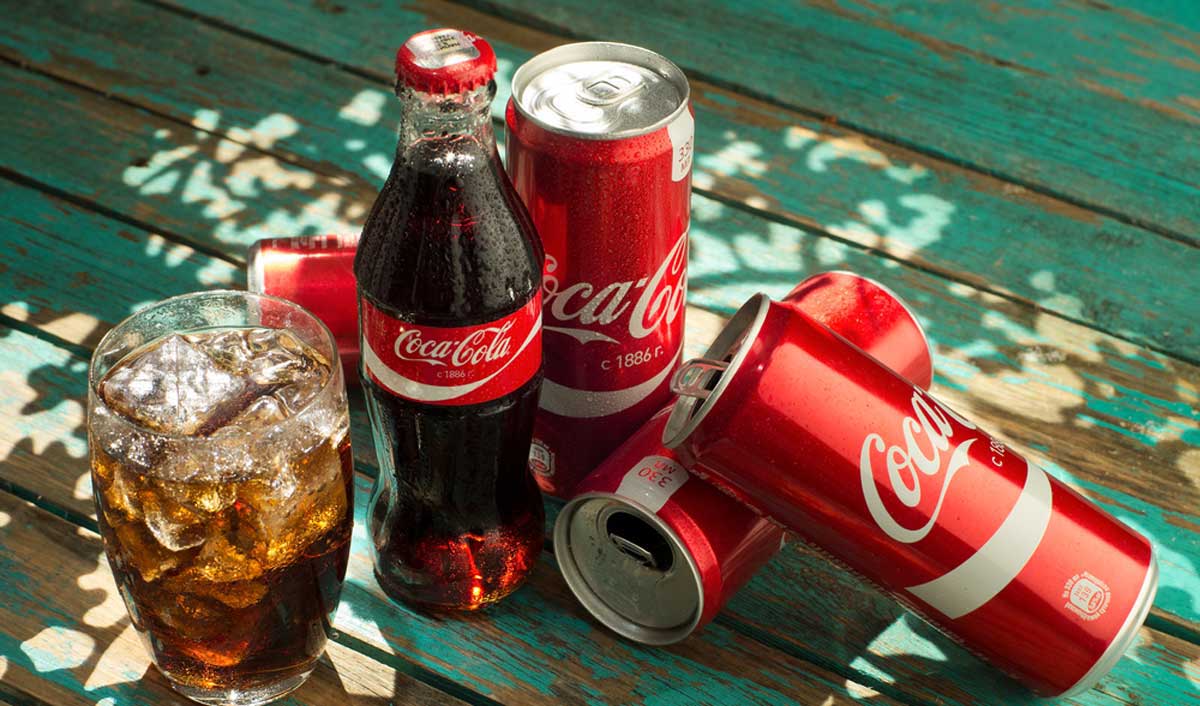A Surprising Move in the Coffee World
On August 23, 2025, news broke that Coca-Cola is working with investment bank Lazard to explore a potential sale of Costa Coffee, the British coffee chain it acquired for $5.1 billion in 2018. This development, reported exclusively by Sky News, has sent ripples through the beverage industry, raising questions about Coca-Cola’s long-term strategy and the future of Costa, one of the world’s largest coffee chains. With over 4,000 outlets globally, Costa’s potential sale marks a pivotal moment for both the coffee market and Coca-Cola’s diversification efforts.
The Backstory: Coca-Cola’s Bold Bet on Coffee
Why Coca-Cola Bought Costa
In 2018, Coca-Cola made headlines by acquiring Costa Coffee from Whitbread PLC for £3.9 billion ($5.1 billion), a move aimed at diversifying its portfolio beyond sugary soft drinks. The acquisition was seen as a strategic leap into the fast-growing coffee market, valued at $0.5 trillion and growing at 6% annually. CEO James Quincey called Costa a “strong coffee platform” to expand Coca-Cola’s reach into hot beverages, a segment where it lacked a global brand.
The Vision Behind the Acquisition
Coca-Cola envisioned Costa as a springboard for global coffee dominance, leveraging its retail footprint, roastery, and Costa Express vending machines. The plan included expanding ready-to-drink (RTD) coffee and at-home formats, particularly in markets like China. The acquisition promised synergies with Coca-Cola’s vast distribution network, positioning Costa to compete with giants like Starbucks and Nestlé.
Initial Successes and Challenges
Costa’s early years under Coca-Cola saw progress, with RTD coffee launches in over 300,000 outlets in China and growth in Costa Express machines. However, the COVID-19 pandemic disrupted the on-trade business, and rising coffee bean prices—surging to $4.30 per pound in 2025—squeezed margins. By 2023, Costa’s revenue was £1.22 billion, down from £1.3 billion in 2018, signaling stagnation.
Why Sell Costa Now?
A Shift in Strategic Focus
Coca-Cola’s exploration of a Costa sale reflects a broader effort to streamline its portfolio and refocus on its core soft drinks business. CEO James Quincey recently hinted at “rethinking” Costa’s role, citing underwhelming performance and a need to make the $5.1 billion investment “work harder.” Analysts suggest the sale could help Coca-Cola fund new ventures or reduce exposure to volatile commodity prices.
Financial Considerations
The potential sale could result in a multibillion-pound loss, with analysts estimating Costa’s current value at around £2 billion—nearly half the acquisition price. Despite this, the proceeds would be immaterial to Coca-Cola, which boasts a market capitalization of $304.2 billion. The move signals a pragmatic acknowledgment that Costa’s retail-heavy model may not align with Coca-Cola’s strengths in bottling and distribution.
My Coffee Shop Moment
I remember visiting a Costa in London in 2019, just after the Coca-Cola acquisition. The barista proudly showed off a new Costa Express machine, boasting about its “barista-quality” coffee. It felt like Coca-Cola was poised to take Costa everywhere—vending machines, supermarkets, maybe even my local gym. The news of a potential sale feels like a plot twist, as if that ambitious vision hit a wall. It’s a reminder that even giants like Coca-Cola can misjudge a market.
The Sale Process: What We Know
Lazard’s Role in the Deal
Coca-Cola has engaged Lazard, a leading investment bank, to explore options for Costa, including a potential sale. Initial talks with private equity firms and other bidders have begun, with indicative offers expected in early autumn 2025. However, sources caution that Coca-Cola may choose not to proceed if the offers don’t meet expectations.
Potential Buyers
Private equity firms are among the early contenders, drawn to Costa’s global footprint and established brand. With over 2,700 stores in the UK and Ireland and 1,300 more worldwide, Costa remains a heavyweight in the coffee market. Competitors like Starbucks, Caffe Nero, and Pret A Manger are unlikely buyers due to antitrust concerns, but upmarket chains like Gail’s, also exploring a sale, could inspire similar interest.
The Numbers Behind Costa
| Metric | Value |
|---|---|
| Acquisition Price (2018) | £3.9 billion ($5.1 billion) |
| Estimated Sale Value (2025) | ~£2 billion |
| UK Stores | 2,700+ |
| Global Stores | 1,300+ (50 countries) |
| Costa Express Machines | 8,000+ |
| Revenue (2023) | £1.22 billion |
| Workforce | ~35,000 |
Costa’s scale makes it an attractive asset, but its recent performance may temper buyer enthusiasm.
Pros and Cons of Selling Costa
Pros
- Portfolio Streamlining: Allows Coca-Cola to focus on its core soft drinks and emerging categories like hard seltzer.
- Capital Reallocation: Sale proceeds could fund acquisitions or innovation in higher-margin segments.
- Reduced Risk: Less exposure to volatile coffee bean prices and retail challenges.
Cons
- Financial Loss: A sale at £2 billion would mean a significant loss on the original investment.
- Brand Dilution: Losing Costa could weaken Coca-Cola’s presence in the coffee market.
- Operational Expertise: Coca-Cola may forfeit the retail and coffee expertise gained from Costa.
The Coffee Market: A Competitive Landscape
Costa’s Position in the Industry
Costa is the UK’s largest coffee chain and the world’s second-largest behind Starbucks, with a presence in 50 countries. Its main rivals—Starbucks, Caffe Nero, and Pret A Manger—face similar pressures from rising costs and shifting consumer habits. The coffee market, valued at $165 billion for shops alone, remains fragmented, offering opportunities but also fierce competition.
Comparison: Costa vs. Competitors
| Brand | Global Stores | Key Strength | Key Challenge |
|---|---|---|---|
| Costa Coffee | 4,000+ | Strong UK presence, vending | Stagnant revenue, retail complexity |
| Starbucks | 38,000+ | Global brand, RTD dominance | High operating costs |
| Caffe Nero | 1,000+ | Boutique appeal, loyal base | Limited global reach |
| Pret A Manger | 600+ | Food-focused offerings | Preparing for stake sale |
Costa’s vending and retail footprint give it an edge, but its growth has lagged behind Starbucks’ aggressive expansion.
The Rise of RTD Coffee
Coca-Cola saw potential in Costa’s RTD coffee, especially in markets like China, where it reached 300,000 outlets. However, its RTD launches have been “small and sporadic,” lacking the scale of Starbucks’ bottled Frappuccinos, distributed via PepsiCo. This gap highlights Coca-Cola’s struggle to integrate Costa into its broader strategy.
What’s Next for Costa?
Potential Outcomes of the Sale
If sold, Costa could thrive under new ownership, particularly with private equity firms known for turning around retail brands. A buyer might focus on expanding RTD products or streamlining operations to boost profitability. Alternatively, Coca-Cola could retain Costa, integrating it further into its Europe operating unit, as announced in November 2024.
Impact on Employees and Consumers
Costa employs around 35,000 people globally, and a sale could lead to restructuring or job changes, though Coca-Cola’s recent organizational shifts suggest minimal employment impact. For consumers, a new owner might refresh Costa’s menu or store experience, but there’s also a risk of price hikes or reduced quality if cost-cutting takes priority.
A Barista’s Perspective
Last year, I chatted with a Costa barista in Dubai who raved about the chain’s community vibe. “It’s not just coffee—it’s where people meet, work, laugh,” she said. The idea of Costa changing hands feels bittersweet. Will a new owner keep that warmth, or will it become another corporate cookie-cutter chain? Only time will tell.
People Also Ask (PAA) Section
Why is Coca-Cola selling Costa Coffee?
Coca-Cola is exploring a sale to refocus on its core soft drinks business and address Costa’s underwhelming performance. The coffee chain’s revenue has declined since 2018, and rising coffee bean prices have hurt margins. A sale could free up capital for new ventures.
How much did Coca-Cola pay for Costa Coffee?
Coca-Cola acquired Costa for £3.9 billion ($5.1 billion) in 2018 from Whitbread PLC. The deal included Costa’s 4,000+ stores, vending operations, and roastery, aiming to establish a global coffee platform.
Who might buy Costa Coffee?
Private equity firms are among the potential bidders, given Costa’s global presence and brand value. Strategic buyers like other beverage companies are less likely due to competition concerns. Indicative offers are expected in autumn 2025.
Where can I find more information about the sale?
Check trusted sources like Reuters or Sky News for updates on the sale process. Coca-Cola’s investor relations page (investors.coca-colacompany.com) may also provide official statements.
Tools and Resources for Following the Story
Best Tools for Staying Updated
- Reuters App: Real-time business news, including updates on corporate deals.
- Bloomberg Terminal: In-depth financial analysis for investors tracking the sale.
- X Platform: Follow @SkyNews or @Reuters for breaking news and sentiment.
Where to Learn More
For industry insights, visit BeverageDaily or Forbes. To understand Costa’s operations, check its official site (costacoffee.com). For investment perspectives, explore Investing.com.
Transactional Tip: Invest in Knowledge
If you’re an investor or coffee enthusiast, subscribe to newsletters from Reuters or Sky News for real-time updates on the sale. Joining industry forums on platforms like Reddit can also provide insider perspectives and discussions.
The Bigger Picture: Coca-Cola’s Evolution
Coca-Cola’s potential sale of Costa reflects a broader trend among beverage giants to adapt to changing consumer preferences. With health-conscious consumers shunning sugary drinks and coffee prices soaring, companies like PepsiCo and Nestlé are also pivoting—Pepsi with SodaStream, Nestlé with Starbucks’ retail products. Costa’s story is a cautionary tale of ambitious diversification meeting real-world challenges, but it’s also a testament to the dynamic nature of the beverage industry.
FAQ Section
Why is Coca-Cola exploring a sale of Costa Coffee?
Coca-Cola aims to streamline its portfolio and focus on core soft drinks, as Costa’s performance has lagged, with 2023 revenue at £1.22 billion compared to £1.3 billion in 2018. Rising coffee bean prices and retail challenges also factor in.
How much could Costa Coffee be sold for?
Analysts estimate Costa’s sale value at around £2 billion, a significant loss from the £3.9 billion Coca-Cola paid in 2018. The final price will depend on bids received in autumn 2025.
Who is handling the sale process for Costa?
Investment bank Lazard is working with Coca-Cola to explore options and gauge interest from potential buyers, primarily private equity firms. Indicative offers are expected in early autumn 2025.
What is Costa Coffee’s global presence?
Costa operates over 4,000 stores in 50 countries, including 2,700+ in the UK and Ireland. It also has 8,000+ Costa Express vending machines and a growing RTD coffee business, notably in China.
Will the sale affect Costa’s operations?
A sale could lead to restructuring, but Coca-Cola’s recent integration of Costa into its Europe unit suggests minimal immediate impact on jobs or stores. Long-term changes depend on the buyer’s strategy.
Conclusion: A Brew of Change
Coca-Cola’s exploration of a Costa Coffee sale is more than a business transaction—it’s a reflection of the challenges and opportunities in the global beverage market. From its bold $5.1 billion acquisition to the potential £2 billion sale, Costa’s journey under Coca-Cola highlights the complexities of diversifying into retail and hot beverages. Whether a new owner revitalizes Costa or Coca-Cola doubles down on its coffee ambitions, this story is a fascinating chapter in the ever-evolving world of drinks. Stay tuned to Sky News or Reuters for the next sip of news.


